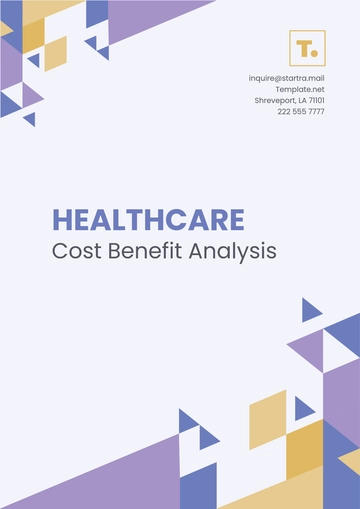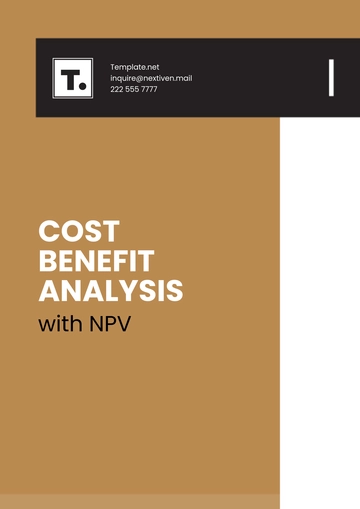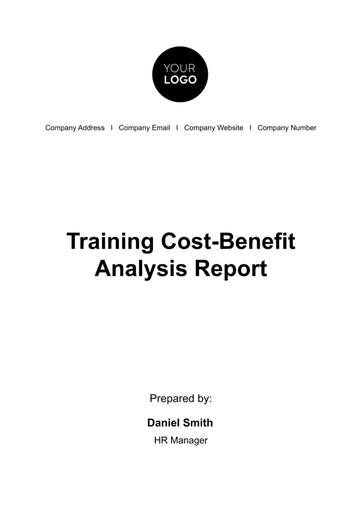Cost Benefit Analysis for Startups
The purpose of this cost benefit analysis is to evaluate the potential costs and benefits associated with [Your Company Name]. This analysis aims to assist decision-makers in understanding the economic implications of various business strategies. By assessing the costs against the projected benefits, this analysis will provide a foundation for making informed financial decisions.
Introduction
This document presents a detailed cost benefit analysis framework tailored for [Your Company Name]. The following sections will guide you through defining the objectives, identifying and categorizing costs and benefits, and analyzing the net impact of the proposed venture.
Objectives of the Analysis
The primary objectives of conducting this cost benefit analysis are:
To assess the financial feasibility of the proposed venture.
To identify and quantify the costs associated with the project.
To identify and quantify the benefits that may accrue from the project.
To provide recommendations based on the analysis outcomes.
Identification of Costs
Fixed Costs
Fixed costs are expenses that remain constant regardless of the level of production or sales. These include, but are not limited to:
Rent
Insurance premiums
Utilities
Depreciation
Variable Costs
Variable costs vary directly with the level of output or sales. These include:
Semi-variable Costs
Semi-variable costs consist of a fixed component and a variable component. Examples include:
Identification of Benefits
Tangible Benefits
Tangible benefits are those that can be easily quantified and associated with specific financial outcomes. Examples include:
Intangible Benefits
Intangible benefits may be more challenging to quantify but are equally important. These include:
Brand recognition and reputation enhancement
Improved customer satisfaction and loyalty
Intellectual property and technological advancements
Cost Benefit Analysis Table
Category | Description | Amount ($) |
|---|
Fixed Costs | Annual Operating Rent | 10,000 |
Variable Costs | Production Costs per Unit | 5 |
Tangible Benefits | Annual Revenue | 50,000 |
Intangible Benefits | Brand Value Increase | 10,000 |
Conclusions and Recommendations
Based on the analysis above, the net benefit of pursuing the proposed venture is calculated by subtracting the total costs from the total benefits. If the net benefit is positive, the venture could be considered economically viable. Management should also consider the qualitative factors and strategic alignment with the startup's long-term goals.
In conclusion, this cost benefit analysis serves as a robust framework for evaluating the economic viability of [Your Company Name]. It is recommended that this analysis is revisited periodically to incorporate actual data and adjust for changing market conditions.
Analysis Templates @ Template.net






























